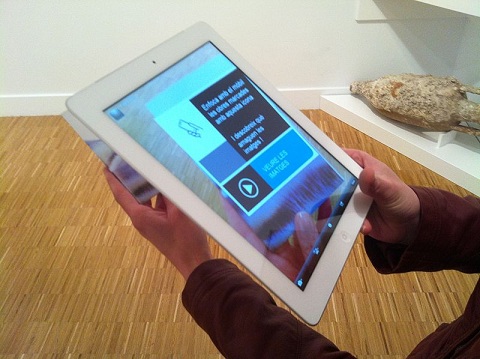 Static augmented reality may be a thing of the past
Static augmented reality may be a thing of the past
Augmented reality has managed to make its way into the mainstream, thanks largely to the support of tech-savvy consumers around the world. Typically, augmented reality comes as a feature in mobile applications. These applications often rely heavily on the sensors of mobile devices as well as a static dataset that paints digital content over the real world. Augmented reality itself is a very dynamic technology, thus the static nature of mobile applications may be hampering the technology’s capabilities.
Professors work to make innovative breakthroughs in technology
Professors Matthew Turk and Tobias Hollerer from the University of California – Santa Barbara, have been working to make augmented reality mobile applications much more dynamic. The professors envision a future for augmented reality where the technology is more stable, practical, and capable of higher levels of engagement with consumers. Turk and Hollerer have been research ways to incorporate real-time computer vision into augmented reality applications, which would allow these applications to become much more dynamic in their ability to overlay digital content onto the real world.
Augmented reality showing a stronger presence in mobile commerce
Augmented reality has become a very popular tool in entertainment and marketing. Even leashed by the static nature of most mobile applications, the technology has been able to provide consumers with a wide range of interactivity. Augmented reality has begun breaking away from its traditional fields recently, and entering that of mobile commerce. While mobile commerce often refers to the practice of making purchases with a mobile device, the term also encompasses mobile shopping. Augmented reality has been growing in popularity amongst mobile shoppers because of its capabilities of providing these consumers with context sensitive information on particular products.
Grants help fund ambitious research
Turk and Hollerer have recently been awarded two grants; one from the Office of Naval Research, and another from the National Science Foundation. These grants are helping fund the professors’ work in their so called “anywhere” augmented reality application. The concept strongly focuses on making augmented reality possible no matter where a person may be.

 paints a promising future for augmented reality applications. Augmented reality is growing in popularity as an interactive technology and has been taking the mobile world by storm. The technology has won favor amongst consumers and marketers because of its dynamic capabilities. It has also begun making its way into the mobile commerce industry, though its uses therein have been sparse and limited in scope thus far. Over the next year, augmented reality applications are expected to see massive growth.
paints a promising future for augmented reality applications. Augmented reality is growing in popularity as an interactive technology and has been taking the mobile world by storm. The technology has won favor amongst consumers and marketers because of its dynamic capabilities. It has also begun making its way into the mobile commerce industry, though its uses therein have been sparse and limited in scope thus far. Over the next year, augmented reality applications are expected to see massive growth.